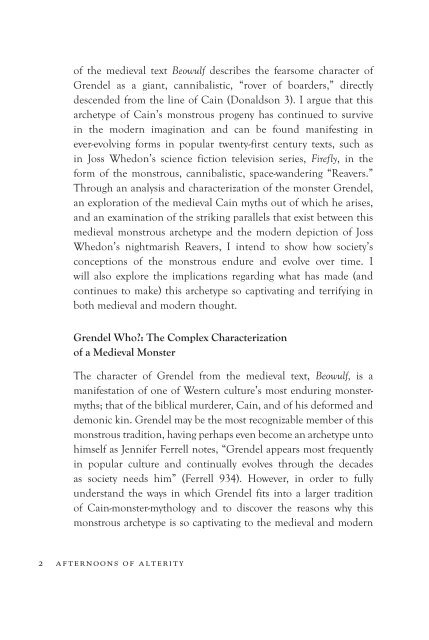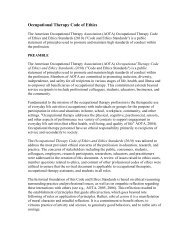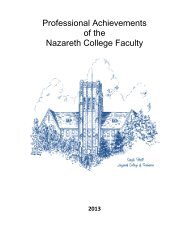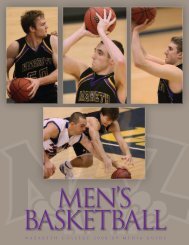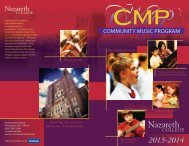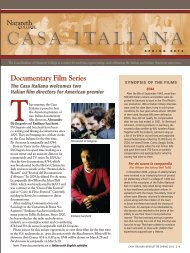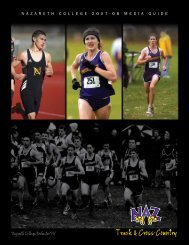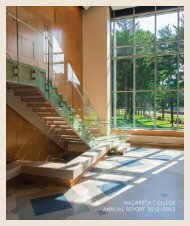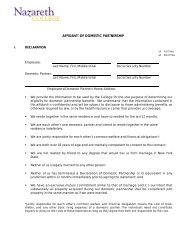Afternoon of Alterity - Nazareth College
Afternoon of Alterity - Nazareth College
Afternoon of Alterity - Nazareth College
You also want an ePaper? Increase the reach of your titles
YUMPU automatically turns print PDFs into web optimized ePapers that Google loves.
<strong>of</strong> the medieval text Beowulf describes the fearsome character <strong>of</strong>Grendel as a giant, cannibalistic, “rover <strong>of</strong> boarders,” directlydescended from the line <strong>of</strong> Cain (Donaldson 3). I argue that thisarchetype <strong>of</strong> Cain’s monstrous progeny has continued to survivein the modern imagination and can be found manifesting inever-evolving forms in popular twenty-first century texts, such asin Joss Whedon’s science fiction television series, Firefly, in theform <strong>of</strong> the monstrous, cannibalistic, space-wandering “Reavers.”Through an analysis and characterization <strong>of</strong> the monster Grendel,an exploration <strong>of</strong> the medieval Cain myths out <strong>of</strong> which he arises,and an examination <strong>of</strong> the striking parallels that exist between thismedieval monstrous archetype and the modern depiction <strong>of</strong> JossWhedon’s nightmarish Reavers, I intend to show how society’sconceptions <strong>of</strong> the monstrous endure and evolve over time. Iwill also explore the implications regarding what has made (andcontinues to make) this archetype so captivating and terrifying inboth medieval and modern thought.Grendel Who?: The Complex Characterization<strong>of</strong> a Medieval MonsterThe character <strong>of</strong> Grendel from the medieval text, Beowulf, is amanifestation <strong>of</strong> one <strong>of</strong> Western culture’s most enduring monstermyths;that <strong>of</strong> the biblical murderer, Cain, and <strong>of</strong> his deformed anddemonic kin. Grendel may be the most recognizable member <strong>of</strong> thismonstrous tradition, having perhaps even become an archetype untohimself as Jennifer Ferrell notes, “Grendel appears most frequentlyin popular culture and continually evolves through the decadesas society needs him” (Ferrell 934). However, in order to fullyunderstand the ways in which Grendel fits into a larger tradition<strong>of</strong> Cain-monster-mythology and to discover the reasons why thismonstrous archetype is so captivating to the medieval and modern2 afternoons <strong>of</strong> alterity


